Software solutions for transport operators
APPIA.trans is a software to efficiently manage the transport of goods using in-house resources or carriers. Discover how APPIA.trans can optimize your transport costs through delivery route planning wizards.
It integrates with carriers and issues transport documents. It’s so easy! What’s more, discover how easy to share a website with your clients is so it can track shipments and access to proof of delivery (POD) documents.

appia.trans
Software for transport operators
- Dispatch management. Best-price criterion. Shipping orders
- Integration with carriers
- Shipment tracking and access to proof of delivery (POD)
- Chemical warehousing management
- Billing
- Full integration with other systems
appia.rf.voice
Enter a new dimension in your warehouse management system with APPIA.rf.voice. Agility and usability as you’ve never imagined them before through the unbeatable combination of barcode scanning and voice capabilities. Customize the operation, tailor it to your needs and get to work. It’s so easy!
appia.go
Share a website with your clients so they can track shipments and access to proof of delivery (POD) documents, as well as order pickups and deliveries. Strengthen your technology showcase for clients with APPIA.go while cutting costs and eliminating errors.
appia.mobile
Your deliveries in real time with APPIA.mobile. Drivers receive scheduled pickups and deliveries on their cell phones and confirm them online with their signatures, photos and remarks. A great add-on for deliveries using in-house resources.
appia.monitor
View the day-to-day operations and processes of of your warehouse and your favorite KPIs. Decide where to place the monitors and TVs and what to show on each one, and let APPIA.monitor do the rest. Integrates Microsoft PowerBI technology.
appia.tabula
Leave routine tasks to APPIA.tabula, save time and avoid forgetting things. This robot automatically performs scheduled tasks at the scheduled intervals. It can send and import files, print, send emails, integrate with clients, suppliers, carriers and much more.
Download data sheet
Why buy when you can rent?
We’re a unique company that thinks differently. We’re your companions on the journey. This is why our all-in-one rental service covers everything from the first minute of set-up to commissioning of the software. What’s more, it’s a risk-free option because it comes with no minimum contract terms or penalties. We make it easy for you.
Do you want to improve your warehouse management system?
Contact us!
Frequently asked questions
A TMS (transport management system) is a transport management software that allows companies to automate their logistics processes to improve their efficiency.
Using a TMS not only helps us to make transportation more efficient, but also, depending on the software, to make it an intelligent transportation, which optimizes routes in a predictive way, controls parcels, and provides us with metrics and key indicators. In addition, these systems also contribute to making transportation more sustainable, since optimizing routes reduces fuel consumption, and therefore CO2 emissions.
As with other logistics and transport software, the first thing we must ask of this type of system is that it be flexible, that is, that its functionalities can be adapted to the specific needs of our company. However, there are some functionalities that are usually common:
- Real-time information, overall, for all transport routes, or for a specific order. It is essential that the TMS allows us to control the transport status of the goods.
- Synchronization, which means, being able to coordinate transport with the warehouse, with the supplying logistics company and with the recipient of the goods, be it an intermediary customer or the end customer.
- Traceability is essential in logistics.
- Optimization of transport routes, both globally and specifically for each carrier, especially if there are incidents in the routes that were initially defined.
Transportation and logistics software is essential to correctly manage the complexity of today’s supply chain, and to optimize transportation, especially in the so-called “last mile”, a critical point where most supply chain costs and errors are concentrated. Therefore, the main advantages of using a transport and logistics software are:
- The entire logistics process is streamlined, from warehouse collection, delivery routes, and even reverse logistics processes.
- Accurate, real-time information on the entire supply chain (traceability).
- Better integration with suppliers, clients, and final customers.
- Reduction of errors due to manual process or non-automated processes.
- Cost reduction.
- Increased customer satisfaction.
Nowadays, every company must be clear about its needs and requirements when choosing a software, since the market offers an infinite number of solutions. The main criteria to consider are the following:
- Choose a specific software for transport companies. Generic software that are then adapted by sector or company, end up not responding in the same way, so it is better to choose a supplier that develops software for our sector.
- Integration is essential, both with other internal invoicing and accounting programs, as well as with third-party and external programs, such as the warehouse network.
- We must make sure that the supplier company has a good support team to help us with the implementation as well as with training and support in case of any incident, and that they carry out periodic updates.
- The program should be flexible and scalable, to meet both our current needs and those we may have in the medium and long term.
Transport companies operate in an increasingly complex industry, both due to the increase in online orders and the oversaturation of the transport routes themselves, as well as the stress on the global supply chain. As a result, they need tools that enable them to optimize their processes, especially with regard to the speed and efficiency of transport routes.
With a program for carriers, companies can optimize their routes to make them faster, both in planning and in the search for alternatives to incidents, they can automate tasks to gain speed and minimize errors, such as email delivery of proof of receipt of goods, and improve communication between the parties involved, with better traceability of the goods. In addition, route optimization also helps to reduce fuel consumption.
Each company has different requirements, depending on its size, the sector in which it operates (urban transport, refrigerated goods transport, international transport…).
However, there are some considerations that are common to all companies:
- Traceability: today, no transport company can value a software that does not offer accurate and real-time traceability of goods.
- The calculation and optimization of the route for the transport, is usually another of the most demanded functionalities.
- Automatic notifications, to be aware of information that interest us, without the need to enter into the application every moment.
- Flexibility, it means, we can adapt the app’s functionalities to the specific needs of our company. In addition to the first three, each logistics company may have different requirements, and the application must be able to respond to them.
A TMS or Transport Management System contributes to improve transport management in different ways:
- It reduces delivery times by optimizing transport routes.
- It reduces transport costs: fuel, need for less fleet…
- Centralizes information to gain efficiency in daily management.
- Improves urban logistics, one of the most complex and time-consuming.
- It integrates to control and optimize billing, and especially the extra costs associated with the service.
WMS or logistics management software is only necessary for a transport company if it has its own storage space. So, what are the advantages of using a WMS?
- You gain in speed, especially in the planning and optimization of transport routes.
- There is complete traceability of the goods, especially in the “last mile” and reverse logistics, two critical points for transport companies.
- Improved communication between the different integrates of the supply chain.
- Reduction of errors, and therefore the costs associated with these errors and delays…
- Increased end-customer satisfaction.
Nowadays, transport software can have an infinite number of functionalities. However, there are some common ones that should be taken into account when deciding on one TMS or another, for example:
- Capacity to manage shipments.
- Integration with the transport agency, warehouse and/or logistics company, as well as integration with internal systems such as invoicing.
- Traceability: Tracking of shipments and access to proof of delivery.
- Scalability: the program must have the ability to adapt in the short, medium, and long term to our specific needs.
Testimonials
My relationship with APPIA GROUP by VGG has never been that of a supplier but rather that of a partner. We’ve helped each other grow and therein lies the key to APPIA GROUP byVGG’s professional success.
Another important factor is the people, and day after day, both the people who’ve worked there for years and the new hires show that they hold the future.
The logistics market is a highly diversified market, but both the program itself and the service contract options are very impressive, capturing our interest from the get-go.
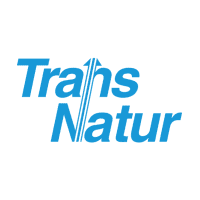
APPIA GROUP by VGG is not just a logistics management software; it’s an essential tool for the management and optimization of processes in warehouses and is an integral part of our company.
One of its major advantages is the versatility we can offer our clients, thereby continuously adapting to their needs.
All this is possible thanks to the people comprising the company, who in our case is Arantza Olmos. We consider her just another TSB team member.
Thanks to her involvement, commitment and business knowledge, she helps us keep on improving by providing solutions and always contributing her point of view. Such mutual trust allows us to grow and evolve together in managing the business.
None of this would be possible without the unmistakable value of teamwork that APPIA GROUP by VGG demonstrates on a daily basis, providing quick solutions to any problem that arises.
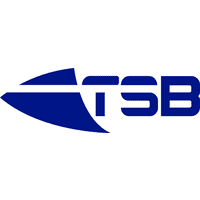
The truth is that after 20 years working together with APPIA GROUP by VGG—and I speak on behalf of all my colleagues—, we’ve been through a lot. But the most important thing of all is that you’ve always been able to find solutions for any of our clients’ needs. We've gotten to know and experienced the great evolution of logistics together, with the satisfaction that every time we made any changes, we learned something new, thereby helping us grow as professionals.
Personally speaking, I can only say that it’s been a very positive experience. And as one of your first clients, let me take the liberty of saying that as partners, our working and personal relationship has all the makings of a great friendship.
In terms of the future, I’m really looking forward to 20 more years of close collaboration and great projects together.

Work—by definition in the context of logistics—is very hard.
Haste, unforeseen events, competition, etc. continuously put the pressure on us. I honestly can’t imagine what we’d do without the help, confidence and good work of our colleagues at APPIA GROUP by VGG. And I call them “colleagues” because that’s what they are. They're part of our company, they know us and they assist us with a great deal of patience. It’s not always easy but they always strive to provide us with the best solution.
It’s always thanks to the entire team.
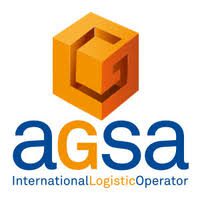
My experience with APPIA GROUP by VGG Aplicaciones started more than 15 years ago. We were a small logistics company that was looking for another software after a bad experience. That’s how we met Víctor Gallego.
We've grown together, and at the same time, we’ve lived through unforgettable moments, staggering problems and endless hours of work together—but always with a positive attitude and a smile on our faces.
Professionally speaking, it has continued to evolve thanks to the great technicians working there as well as the wonderful job that IT support does; without them, APPIA GROUP by VGG wouldn't be where it is today. It always listens to and makes every effort to meet the needs of a sector that’s in constant change.
My personal experience with APPIA GROUP by VGG is not unbiased as, over the years, aside from being great professionals they’ve become great friends... Sergi, Ivan, Anna, Víctor, Martí, Xavier, Cristina, Arantza... I’m sure I’ve left someone out. Some of them forged their own paths after working for APPIA GROUP by VGG and I’m sure that the experience served them well to learn many things.
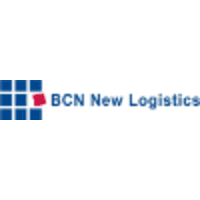
Its been twenty years since DCR set out on a new path as a company, hand in hand with APPIA GROUP by VGG, its new IT partner for warehouse management.
Who would have ever thought that that call by Sergi López asking for Susana—who I mistook for someone selling CCC courses—would be the first of many conversations to come?
The truth is that the passage of time keeps us from looking back and reflecting on things, but it’s nonetheless true that it’s been a great pleasure to see how both companies have kept up with the times and even grown together in such a dog-eat-dog world.
From our perspective, we feel that APPIA GROUP by VGG has been able to understand the needs of operators at any given time and to adjust to them to deliver truly exceptional service. We're truly grateful for this. From ADP to APPIA, the constant improvements have made us feel that all our needs as a logistics operator are always met.
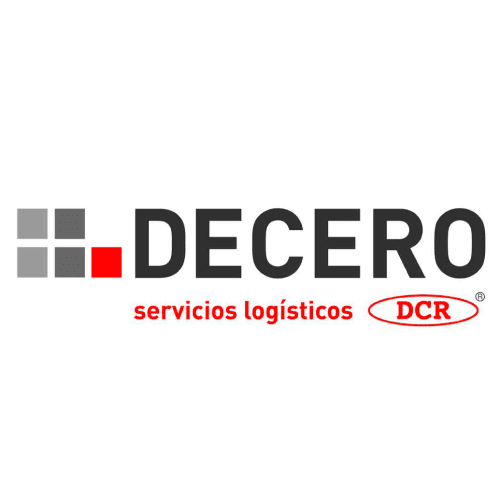
APPIA GROUP by VGG meets our needs as a logistics operator, but above all, the most important thing for us is the team behind it who gives you the support you need when you need it, which APPIA GROUP by VGG definitely has!
Completely proactive, we have considered APPIA GROUP by VGG as one of our own since 2010!
A specialized product for logistics companies, it’s worth pointing out how the program has been tailored to our needs, how quick and easy it adapts to changes in the sector and the great IT support we continue to receive.

To date, we think it’s the best and there’s no doubt about it.
Throughout this time, when we've been learning how to manage APPIA more efficiently, when we've had nothing but questions, clarifications, requests to tailor it to our company's operations, etc., all the specialists with whom we’ve had the pleasure of working with have been exceedingly professional, particularly you and Marina.
We're so grateful for your cooperation and patience.

Support from an experienced team
Developing logistics software since 1994
More than 200 deployments managed
Deployments in Spain, France, Portugal, Italy, Colombia and Peru
